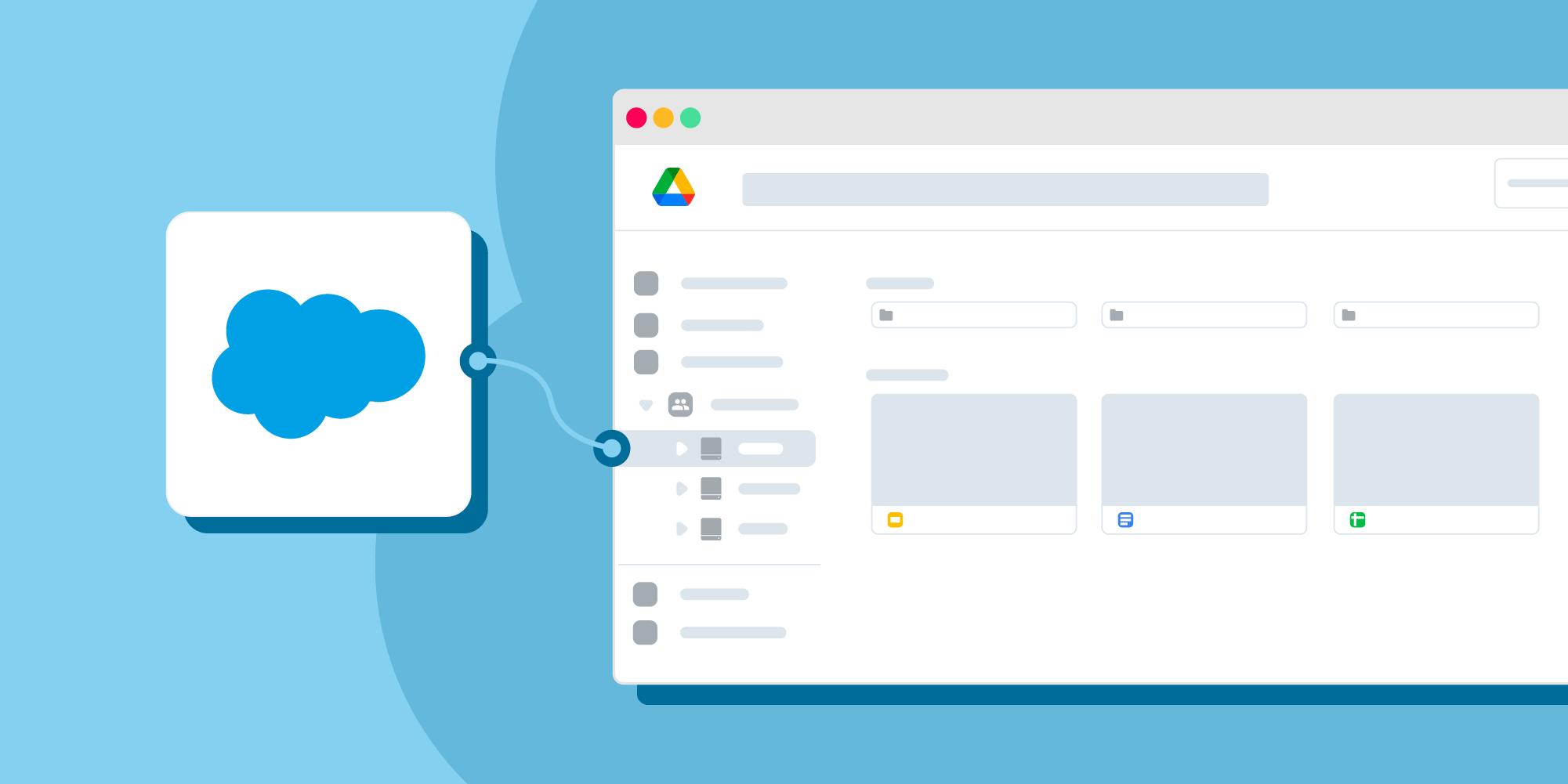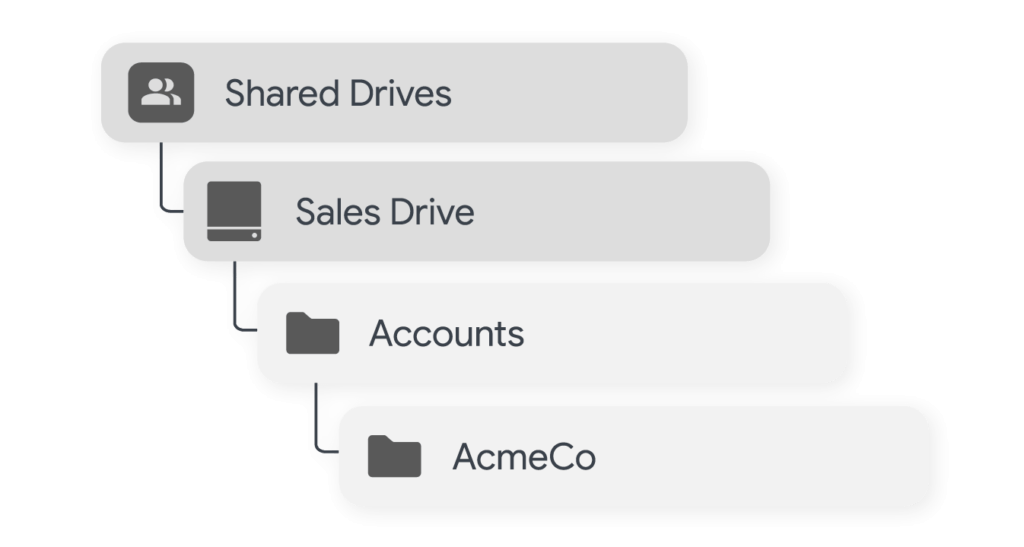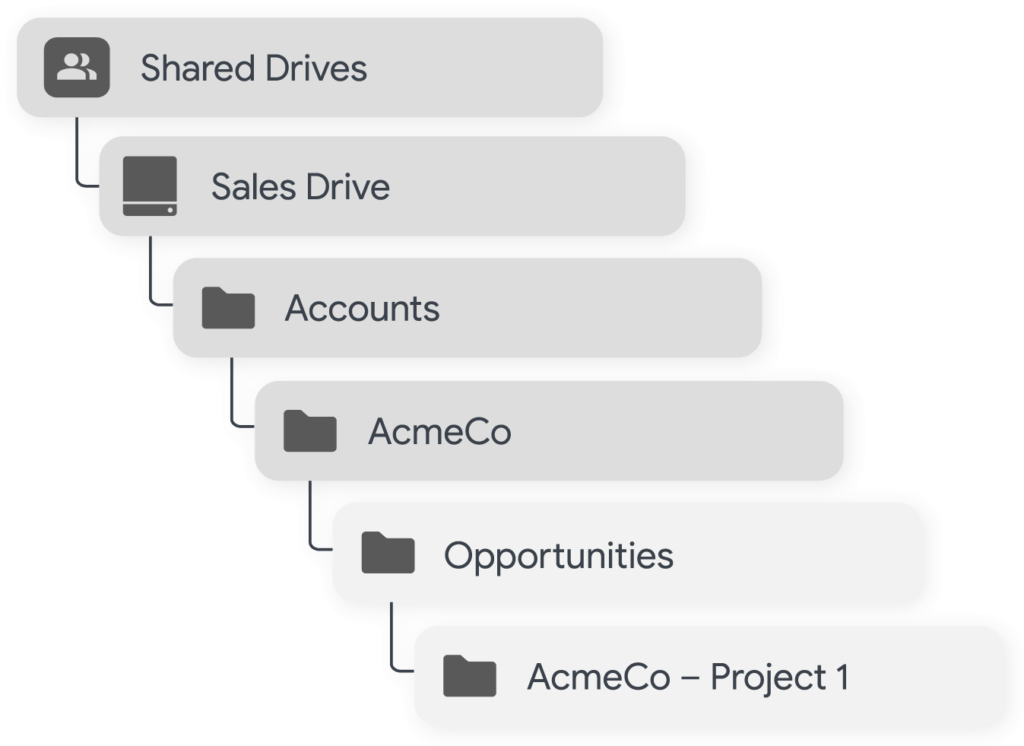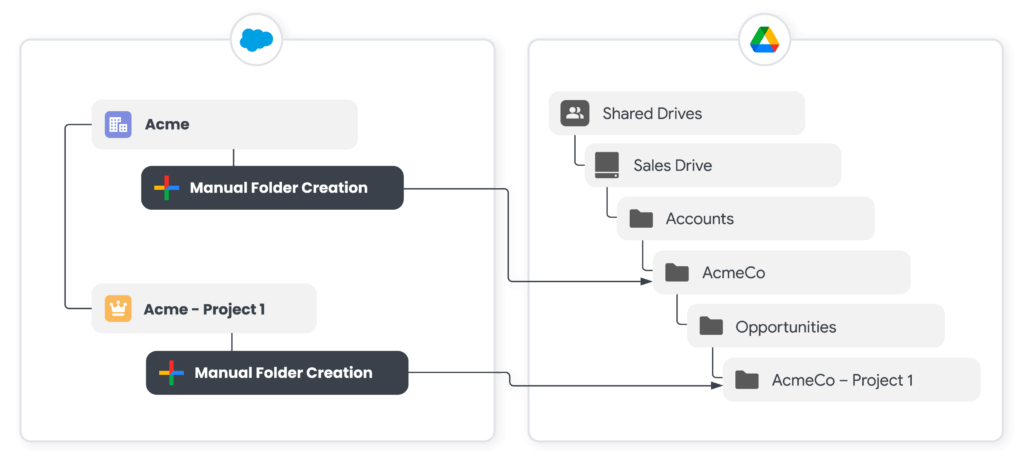

In our last post, we talked you through the ins and outs of setting up a collaborative Shared Drive for an existing organization. Now, we'll go a step deeper and take a look at how to set up a Google Shared Drive folder structure for a Salesforce-based sales team.
What does it mean to set up a Shared Drive for use with Salesforce?
If you're reading this, you probably spend a lot of time tabbing back and forth between Salesforce, where your customer data lives, and Google Drive, where your customer documents and files are. When you spend enough time in both environments, it just makes your life easier to align the two as closely as possible.
With that in mind, our goal here is to set up a Google Shared Drive that mimics Salesforce's organizational structure. Why are we patterning Drive after Salesforce and not the other way around? Simple – Salesforce gives you an organizational structure to work with; Google Drive sets you up with a blank slate and no guidance for how to best manage your files. Additionally, most of your client interactions start in Salesforce; you're usually going to create a Salesforce record for a client before you accumulate documents related to them.
So we're building a Salesforce-friendly file structure in Drive – here's what that looks like. First, you'll need to create a dedicated Shared Drive for your Sales team.

Within that Shared Drive, there should be an Accounts folder with a dedicated subfolder for every Account record in your Salesforce org. The titles of these subfolders should match the titles of their corresponding Account records.

Within each individual Account folder, there should be an Opportunities folder with a dedicated subfolder for each Opportunity record related to the parent Account. Again, the titles of these subfolders should match those of their corresponding Opportunity records.

So that's where you need to end up – but there are a couple of different ways to get there. Let's walk through two ways to create the Drive environment you need: manually, with nothing more than a little bit of sweat and tears, and automatically, with the Drive Connect app.
The Hard Way: Manual Folder Creation & Maintenance
Don't panic – it's the hard way, not the impossible way. To get started, all you need to do is go into Google Drive and create the folder structure laid out above. Going forward, you'll need to add a new folder in Drive every time you add a new Account or Opportunity in Salesforce. Here's what that looks like:

Not too bad, right? Well, it's not the setup that's a headache here – it's the maintenance. It's simple enough on paper to tell your sales team to go through these steps every time they add or edit a relevant record, but in practice? Folders get misnamed, files end up in the wrong place, and organizational maintenance falls behind. At scale, that little bit of added friction can really throw a wrench in a team's workflow.
Ok, we're not selling this very well. Here's the process – judge for yourself:
- Open up your Sales team's Shared Drive or folder. Within that Shared Drive or folder, create a subfolder titled Accounts.
- In your Salesforce org, open the All Accounts List View. In your new Google Drive Accounts subfolder, create a subfolder for each Account record in the Salesforce org. The name of the subfolder should be identical to the name of its associated Salesforce record.
- Within each Account subfolder, create an Opportunity subfolder. Within that subfolder, create a folder for each Opportunity record associated with the parent Account. Again, these folders' names should be identical to the names of their associated Salesforce Opportunity records.
- Use a custom URL field to link the Drive folders you've created to their corresponding Salesforce record pages.
- Rinse and repeat each time a new Account or Opportunity is added to your Salesforce org.
The Smart Way: Automated Folder Creation & Maintentance with Drive Connect
We built Drive Connect to take the friction out of working with Salesforce and Google Drive. Here, that means leveraging Drive Connect's Automation capabilities to remove the human factor from creating and maintaining a complicated Google Drive folder structure. Instead of manually updating your Google Shared Drive every time you add a new Account or Opportunity in Salesforce, you'll use Flow Actions to keep Drive perfectly synced with your Salesforce org. Here's what that looks like:

In many ways, this is the opposite of the manual method we detailed earlier: it's a little bit more work up front, but requires no time or effort once it's up and running. Here's what you'll need to do:
- First, set up and configure Automation in your Drive Connect-enabled Salesforce org.
- Next, create a Record-Triggered Flow that is initiated when an Account record is created.
- Add an Action to the Flow Canvas and select the Automate Drive Action.
- Give the Action a Label and API Name; then, select New Drive Folder from the Operation picklist.
- Configure the operation to create an account folder within your Sales > Accounts Drive folder as detailed in this article.
- Add a child operation to create an Opportunities folder within that account folder.
- Create another Flow to create a folder within the Opportunities folder when an Opportunity record is created.
This is just the tip of the iceberg when it comes to Drive Connect's automation capabilities: using similar methods, you can use Flows to automate updating Drive folder names, linking existing Drive files & folders to an associated record page, generating Google Docs from Drive Connect templates, and more.
Sold yet? No? That's okay: you can try Drive Connect in your own Salesforce org with a 14-day free trial for up to 10 users – no credit card required.
Automate Your Workflow with Drive Connect
Get started with Drive Connect for free – no credit card required.
